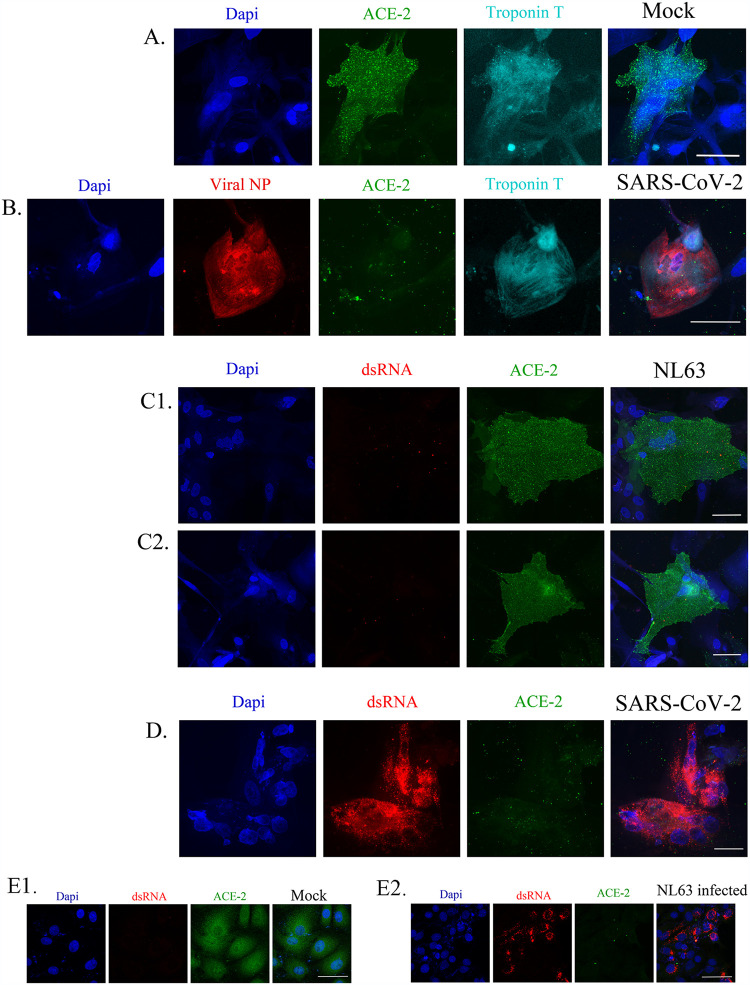FIG 7.
NL63, a seasonal coronavirus that can infect human cells, cannot infect cardiomyocyte cells. (A) We tested three different CM lines; results from CM line 12-4 are shown. CM cells do express ACE2 (green) and troponin T (cyan), as shown by the mock-infected cells. (B) CM cells can be infected with SARS-CoV-2 (red; viral NP antibody), as shown by the decrease in viral NP antibody and ACE2. (C1 and C2). In duplicate, we show NL63 infection at an MOI of 0.1 for 48 h. These cells express ACE2 but have no detectable infection when we look for dsRNA with an antibody (red). (D) The dsRNA antibody is working, as with SARS-CoV-2 infection, we see that this CM line is infected by dsRNA detection (red), and ACE2 levels are decreased in these cells. We also observe an increase in multinucleated cells (blue). (E) To confirm the lack of infection of NL63 in CM lines, we confirmed that the NL63 virus was active by infecting LLC-MK2 cells (E2), a cell type that expresses ACE2 and is known to be infected by coronaviruses. LLC-MK2 cells do express ACE2 (“Mock” in panel E1), and when we infect them with NL63 at an MOI of 0.1 (E2), ACE2 is diminished, and we detect dsRNA (red) by antibody staining. The scale bar is 50 μm.

